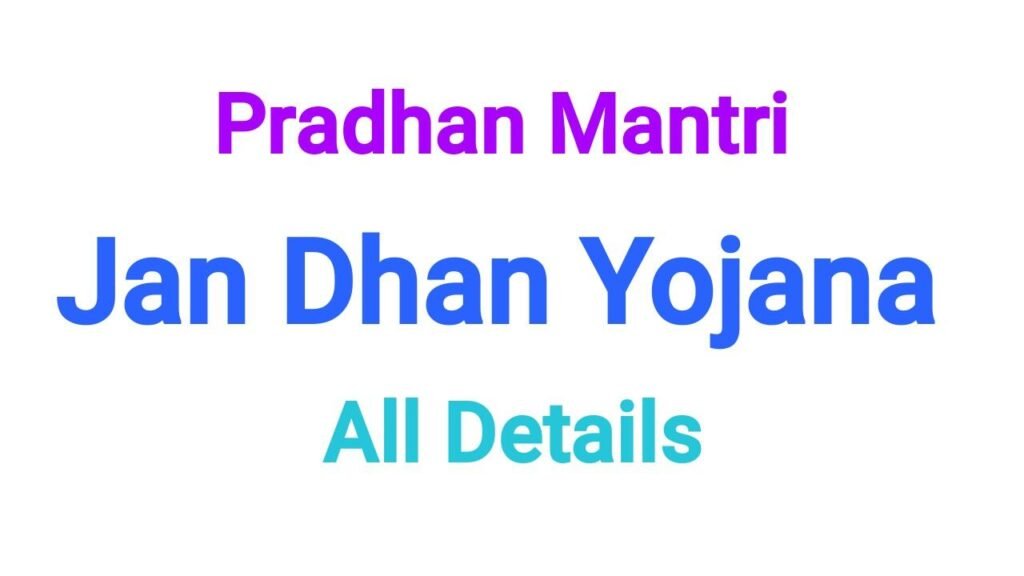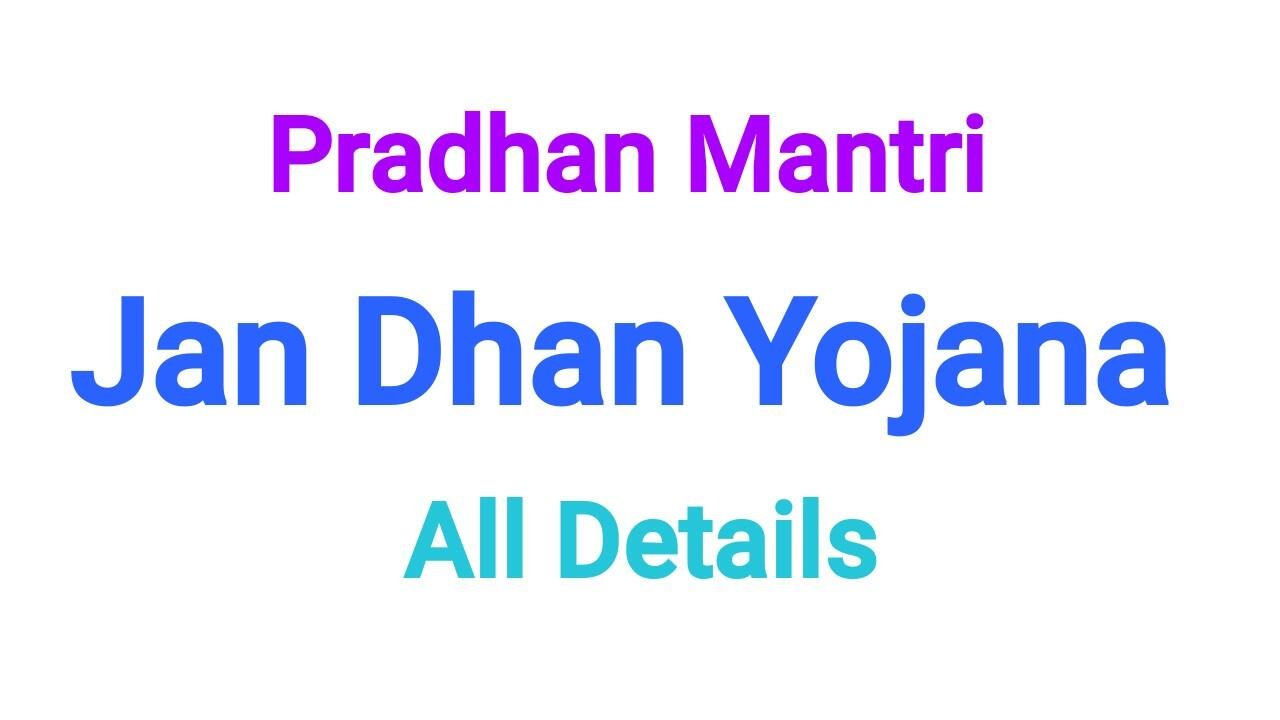In a vast and diverse country like India, where millions of people were still deprived of banking services, promoting financial inclusion was a big challenge. Accepting this challenge, the Government of India launched the Pradhan Mantri Jan Dhan Yojana (PMJDY) on 28 August 2014. This scheme is not only a financial initiative but it is a strong effort to financially empower every citizen of the country and connect them with the mainstream economy. Today, this scheme has proved to be a milestone in changing the financial landscape of India. In this article we will discuss in detail the objective, features, achievements, challenges and future prospects of this scheme.
Objective of Pradhan Mantri Jan Dhan Yojana
The main objective of Pradhan Mantri Jan Dhan Yojana is to connect every family in the country with banking services, especially those who are economically weak or live in rural and remote areas. The slogan of this scheme “Mera Khata, Bhagya Vidhata” makes its intention clear. This scheme focuses on the following goals:
- Financial inclusion: To provide at least one bank account to every family, so that they can avail savings, transactions and other financial services.
- Economic empowerment: To strengthen the economic condition of the poor and deprived sections by providing them access to financial resources.
- Promotion of digital banking: To reduce cash-based economy by encouraging digital transactions.
- Benefits of social security schemes: To directly deliver government schemes like insurance, pension and subsidies to the beneficiaries through Jan Dhan accounts.
Key features of the scheme
Pradhan Mantri Jan Dhan Yojana is designed in such a way that it is simple and accessible to the common people. Some of its key features are as follows:
- Zero Balance Account: Under this scheme, any person can open a bank account without any minimum deposit amount. This facility has proved to be a boon for those who were unable to open a bank account due to financial constraints.
- RuPay Debit Card: Every account holder is provided with a free RuPay debit card, which can be used for ATM and online transactions.
- Accident Insurance Cover: Account holders get free accident insurance cover of up to Rs 2 lakh, provided they use their RuPay card regularly.
- Overdraft Facility: Account holders, whose account remains active for at least six months, can avail overdraft facility of up to Rs 10,000. This is helpful for small businesses or emergency needs.
- Direct Benefit Transfer (DBT): Through Jan Dhan accounts, money from government subsidies and schemes goes directly to the beneficiary’s account, reducing corruption and the role of middlemen.
- Mobile Banking: Account holders can use digital facilities like mobile banking and UPI, which has promoted digital transactions even in rural areas.
Launch and progress of the scheme
The Pradhan Mantri Jan Dhan Yojana was launched as a national mission. To implement it, banks, post offices, and bank mitras (banking correspondents) were involved at the rural level. In the first phase, the government had set a target of opening 12.5 crore new bank accounts within 15 months. But this target was quickly achieved due to the immense popularity of the scheme among the public.
Some important figures (by 2025): –
- Number of accounts: More than 50 crore Jan Dhan accounts have been opened, of which about 55% accounts belong to women. –
- Deposits: The total deposits in these accounts have exceeded Rs 2 lakh crore. –
- Reach in rural areas: About 67% of the accounts have been opened in rural and semi-urban areas. –
- RuPay card distribution: More than 35 crore RuPay debit cards have been distributed. –
- Digital Transactions: Digital transactions through Jan Dhan accounts have seen a massive increase, especially in the use of UPI.
These figures are proof that the Jan Dhan Yojana has not only made banking services accessible to every household, but has also promoted digital and financial literacy.
Achievements of the Scheme
The Pradhan Mantri Jan Dhan Yojana has brought many positive changes in the financial and social landscape of India. Some of its major achievements are as follows:
- Revolution in financial inclusion: The scheme connected people to the banking system who never had access to the doors of a bank earlier. Rural women, small farmers, daily wage labourers, and tribal communities have been the biggest beneficiaries of this scheme.
- Empowerment of women: A large number of women opened Jan Dhan accounts, enabling them to keep their savings safe and become partners in economic decisions.
- Boost to digital economy: The use of digital banking and UPI along with Jan Dhan accounts has played a vital role in moving India towards a digital economy.
- Expansion of social security schemes: Other schemes like Pradhan Mantri Suraksha Bima Yojana, Pradhan Mantri Jeevan Jyoti Bima Yojana, and Atal Pension Yojana were linked through Jan Dhan accounts, thereby expanding the scope of social security.
- Transparency and reduction in corruption: Direct Benefit Transfer (DBT) ensured that subsidies and government assistance reach accounts directly, eliminating the role of middlemen and increasing transparency.
- Guinness World Record: The scheme created a Guinness World Record for opening the most number of bank accounts in a week, which shows its initial impact.

Challenges and Solutions
Like every major initiative, Jan Dhan Yojana also faced some challenges. Some of the major challenges and their solutions are as follows:
Inactive accounts: Initially, many accounts remained inactive as some people did not use the accounts.
Solution: The government conducted awareness campaigns and motivated people to use the accounts with the help of bank mitras. Digital transactions and benefits of government schemes also helped in activating the accounts.
2. Lack of financial literacy: Many people in rural areas were not aware of banking and digital transactions.
Solution : Banks and NGOs organized financial literacy camps. Also, mobile banking and UPI were simplified.
3. Lack of infrastructure: Lack of bank branches and ATMs in remote areas was a problem.
Solution : Bank Mitras and post offices were linked to this scheme. Also, digital banking filled this gap to a great extent.
4. Low utilization of accident insurance: Many account holders were not able to avail the insurance cover because they did not have complete information about it.
Solution: The government and banks emphasized on publicizing the insurance schemes and simplified the process.
Future Prospects
The Pradhan Mantri Jan Dhan Yojana has laid a strong foundation towards financial inclusion, but its future can be even brighter. Some of the possible directions are as follows:
- Expansion of digital banking: With the increasing reach of 5G networks and smartphones, Jan Dhan accounts can be made the main medium for digital transactions.
- Inclusion of financial products: Jan Dhan accounts can be linked to mutual funds, small investment schemes, and other financial products, so that account holders can increase their wealth.
- Skill development and entrepreneurship: Small entrepreneurs and startups can be encouraged by further increasing the overdraft facility.
- Awareness and education: Financial literacy can be further increased through continuous awareness campaigns, especially among youth and women.
- Contribution to Sustainable Development Goals (SDGs): The scheme can help in achieving sustainable development goals such as poverty alleviation, gender equality, and economic growth.
Read Also : Pradhan Mantri Gram Sadak Yojana: The way to connect villages
Conclusion
The Pradhan Mantri Jan Dhan Yojana is a landmark initiative in the history of India, which transformed financial inclusion into a mass movement. It not only connected millions of people to the banking system but also helped them become financially empowered and self-reliant. From rural women to small farmers, the scheme has touched every section of the society. However, some challenges still remain, but these are being overcome with the continuous efforts of the government and banks. Today, when India is moving towards a digital and self-reliant India, the Jan Dhan Yojana remains an important part of this journey. This scheme is not only a financial scheme, but it is a medium to realize the dreams of every Indian. As the scheme progresses, it will definitely play an even more important role in making India an inclusive and prosperous nation.






